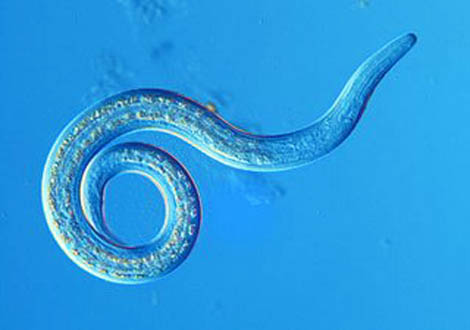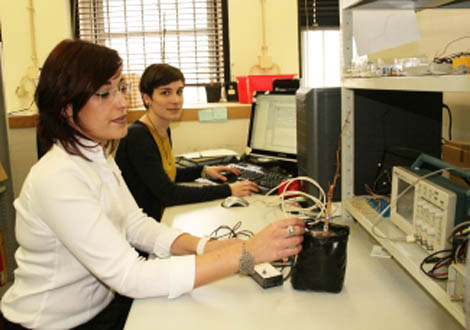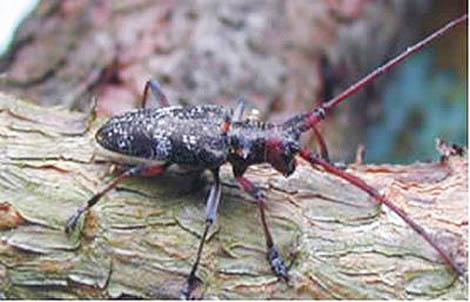 A multidisciplinary team of researchers from the University of Coimbra (UC) and the Escola Superior Agrária de Coimbra (ESAC) has developed a device that allows the detection of the pine nematode disease, known as pine wilt, long before the symptoms appear.
A multidisciplinary team of researchers from the University of Coimbra (UC) and the Escola Superior Agrária de Coimbra (ESAC) has developed a device that allows the detection of the pine nematode disease, known as pine wilt, long before the symptoms appear.
The technology, already protected by a provisional patent, has just been distinguished with the “Best Student Paper Award” at the Biodevices 2013 Conference, held in Barcelona, a top international conference that brings together scientists and professionals from all over the world, from the most diverse areas of knowledge, such as Physics, Medicine, Biomedical Engineering and others.
Using the method scientifically designated as Electrical Impedance Spectroscopy, the team led by Elisabeth Borges, PhD student in Biomedical Engineering at the University of Coimbra, developed a «very simple device that allows quick access to the electrical signature of a biological material (any material, biological or not, it has an electrical signature, when stimulated by an alternating current or voltage), that is, it is possible to obtain information about the physiology of the material».
In simple language, the researcher clarifies, this method is «capable of early identification if a tissue is healthy or damaged, the level of damage, etc., which in the case of the pine nematode is particularly relevant because it can invalidate the advancement of the disease and consequent cutting of pine trees. Currently, the techniques used do not prevent the felling of trees: after the detection and identification of the nematode, the only solution is the immediate felling of the pine trees and their destruction, in accordance with the legislation in force».
 The great advantage of the developed technology is the fact that “it is minimally invasive, quick and more financially advantageous compared to current laboratory techniques. With this device, which still has to be optimized to enter the market, it is possible to obtain an almost instantaneous prognosis» emphasizes Elisabeth Borges.
The great advantage of the developed technology is the fact that “it is minimally invasive, quick and more financially advantageous compared to current laboratory techniques. With this device, which still has to be optimized to enter the market, it is possible to obtain an almost instantaneous prognosis» emphasizes Elisabeth Borges.
The device is composed of two electrodes, placed on the trunk about 30 centimeters from the ground - one electrode injects a current or voltage signal and the other collects the signal generated by this stimulation - and a data acquisition system, developed by team, which allows you to convert these analog signals into digital signals for further analysis.
Through the analysis of the response to the “provocation” injected at multiple frequencies, the electrical signature of the material is obtained. Apparently simple, the interpretation of the obtained signals is a highly complex process because the physiological response has many variants.
During the investigation, which started in 2010, young pine trees were used. The team induced disease in the trees, collected and processed the physiological responses. Now, researchers will also explore the use of this technology in the analysis of Jatropha seeds for the production of Biodiesel and in foods to assess food security conditions.

Author: Cristina Pinto (Press Office – University of Coimbra)
Science in the Regional Press – Ciência Viva


















Comments